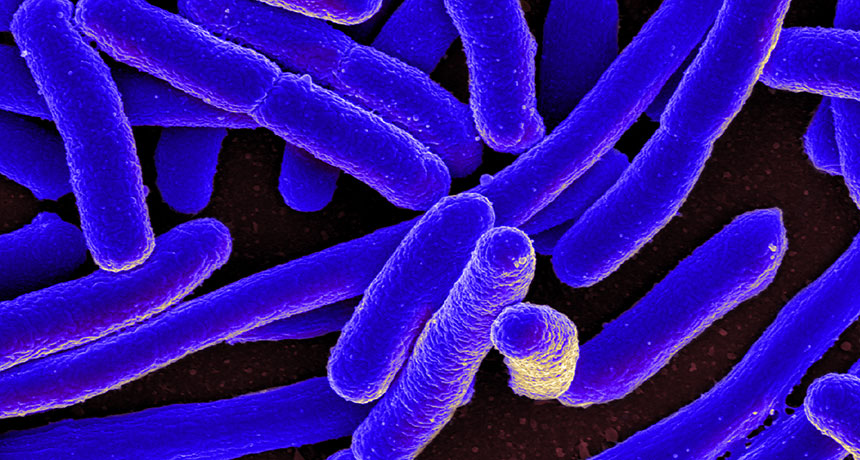-
"Promiscuous Enzymes" Lead Bacteria Down New Pathways to Survival
October 20, 2016 / Written by: Miki Huynh
An image of E. coli. "Promiscuous enzymes" fill in for missing enzymes after the bacteria is genetically altered. Source: NIAID/Flickr (Creative Commons) via Science NewsBiologist Shelley Copley, of the University of Colorado, Boulder and the NASA Astrobiology Institute at MIT and Georgia Tech (formerly the University of Montana), was able to watch a microevolutionary process take place among certain strains of E. coli, when her research team deleted the genes necessary for producing important enzymes and observed how generations of the bacteria developed new ways to survive and replicate.
As Copley explained during her presentation at the 2nd American Society for Microbiology Conference on Experimental Microbial Evolution, the bacteria adapted by turning to “promiscuous enzymes,” enzymes that can switch from their specialty function to create new workaround reaction pathways to achieve the same end as the missing enzyme.
The story was reported in Science News. The results of the research provide a possible glimpse into how these functionally flexible enzymes could play a part in the early evolution of life.
Source: [Science News]
- The NASA Astrobiology Institute Concludes Its 20-year Tenure
- Global Geomorphologic Map of Titan
- Molecular Cousins Discovered on Titan
- Interdisciplinary Consortia for Astrobiology Research (ICAR)
- The NASA Astrobiology Science Forum Talks Now on YouTube
- The NASA Astrobiology Science Forum: The Origin, Evolution, Distribution and Future of Astrobiology
- Alternative Earths
- Drilling for Rock-Powered Life
- Imagining a Living Universe
- Workshops Without Walls: Astrovirology